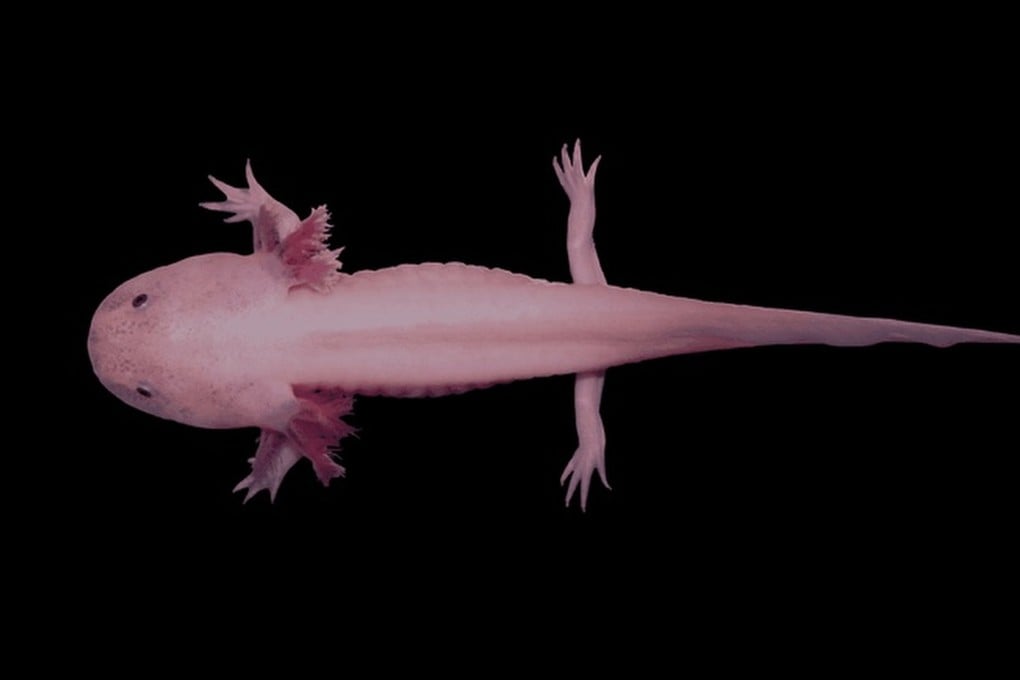Chinese scientists find axolotl’s ability to regenerate after injury may hold key to human brain health
- Team discovers new subtype of neural stem cell in amphibian’s damaged region after 15 days but neurons are not fully functioning until about 60 days post-injury
- Scientist says ultimate research goal is to introduce stem cells to injured human brain tissue locally to restart any regeneration genes

The scientists said their research on the amphibian could potentially improve the regenerative capability of the brains of humans and other mammals in future.
The axolotl is an aquatic salamander able to regenerate cells in their brain, heart, limbs, spinal cord, tail, skin, jaw and muscle as well as the cornea, retina and lens of their eyes.
The researchers from Chinese genomics company BGI, Wuhan University, Guangdong Provincial People’s Hospital and the Chinese Academy of Sciences said axolotls could restore lost cortical cell types in their brains after an injury.
“Axolotls may serve as a model for studying brain regeneration, possibly leading to discoveries that could be valuable for understanding the inherent limitations of brain regeneration in mammals and, ultimately, developing regenerative medicine for the central nervous system,” the team of researchers wrote in an article published in the peer-reviewed journal Science on Friday last week.
In the experiment, the scientists removed a piece of brain tissue from anaesthetised juvenile axolotls to generate brain damage. They then observed the recovery process with BGI’s Stereo-seq technology that reconstructs the axolotl brain architecture at single-cell resolution.

Li Hanbo, a senior scientist at BGI Group and corresponding author of the study, said by phone that the most important discovery was a new subtype of neural stem cell called the reactive ependymoglial cell.
